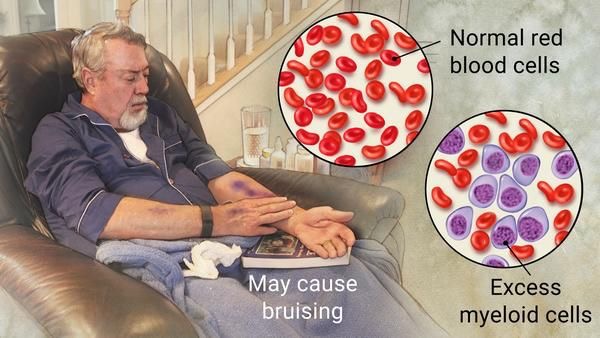News
Important Information About Acute Myeloid Leukemia That Safaricom CEO Bob Collymore Had Been Battling

Acute myeloid leukemia (AML) starts in the bone marrow (the soft inner part of certain bones, where new blood cells are made), but most often it quickly moves into the blood, as well. It can sometimes spread to other parts of the body including the lymph nodes, liver, spleen, central nervous system (brain and spinal cord), and testicles.
Most often, AML develops from cells that would turn into white blood cells (other than lymphocytes), but sometimes AML develops in other types of blood-forming cells.
Some known risk factors for acute myeloid leukemia (AML) are:
• Getting older
• Being male
• Smoking
• Being exposed to certain chemicals
• Being treated with certain chemotherapy drugs
• Being exposed to radiation
• Having certain blood disorders
• Having a genetic syndrome
• Having a family history
Acute myeloid leukemia (AML) can cause many different signs and symptoms. Some are more common with certain subtypes of AML.
People with AML often have several non-specific (general) symptoms. These can include:
• Weight loss
• Fatigue
• Fever
• Night sweats
• Loss of appetite
Symptoms caused by leukemia spread:
– Spread to the skin
If leukemia cells spread to the skin, they can cause lumps or spots that may look like common rashes.
– Spread to the gums
Certain types of AML may spread to the gums, causing swelling, pain, and bleeding.
– Spread to other organs
Less often, leukemia cells can spread to other organs. Spread to the brain and spinal cord can cause symptoms such as:
• Headaches
• Weakness
• Seizures
• Vomiting
• Trouble with balance
• Facial numbness
• Blurred vision
– Enlarged lymph nodes
Rarely, AML can spread to lymph nodes (bean-sized collections of immune cells throughout the body), making them bigger. Affected nodes in the neck, groin, underarm areas, or above the collarbone may be felt as lumps under the skin.
Although any of the symptoms and signs above may be caused by AML, they can also be caused by other conditions.
If you have signs or symptoms of acute myelogenous leukemia, your doctor may recommend that you undergo diagnostic tests, including:
• Blood tests
• Bone marrow test
• Lumbar puncture (spinal tap)
• Genomic testing
Kenya Insights allows guest blogging, if you want to be published on Kenya’s most authoritative and accurate blog, have an expose, news TIPS, story angles, human interest stories, drop us an email on [email protected] or via Telegram
-

 Business6 days ago
Business6 days agoKakuzi Investors Face Massive Loss as Land Commission Drops Bombshell Order to Surrender Quarter of Productive Estate
-

 Investigations7 days ago
Investigations7 days agoINSIDER LEAK REVEALS ROT AT KWS TOP EXECUTIVES
-

 Investigations4 days ago
Investigations4 days agoCNN Reveals Massive Killings, Secret Graves In Tanzania and Coverup By the Govt
-

 Business6 days ago
Business6 days agoBANKS BETRAYAL: How Equity Bank Allegedly Helped Thieves Loot Sh10 Million From Family’s Savings in Lightning Fast Court Scam
-

 News1 week ago
News1 week agoEXPOSED: How Tycoon Munga, State Officials, Chinese Firm Stalled A Sh3.9 Trillion Coal Treasure In Kitui
-

 News1 week ago
News1 week agoEx-Boyfriend Withdraws Explosive Petition to Remove DPP After Criminal Case Against Capital FM Boss Resurfaces
-

 Politics5 days ago
Politics5 days agoI Had Warned Raila Of Possible Fallout In The Odinga Family After His Death, Oburu Says
-

 Investigations5 days ago
Investigations5 days agoHow Ruto’s Family Profits as Kenyan Women Suffer in Saudi Arabia



















